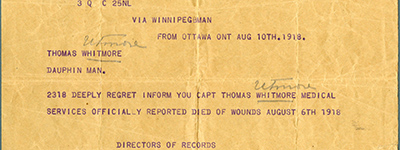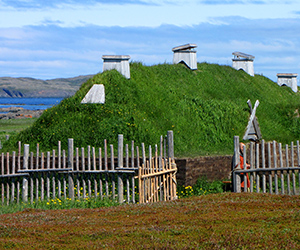CANADA HISTORY - Govenors General
The Earl of Dufferin

Frederick Temple Hamilton-Temple Blackwood, 1st Marquess of Dufferin and Ava, served as Canada’s third Governor General from 1872 to 1878. A charismatic and eloquent statesman of Irish aristocracy, Dufferin is widely regarded as one of the most popular and effective Governors General in Canadian history. His tenure was marked by his deep involvement in Canadian politics and society, his efforts to preserve Canada’s heritage, and his diplomatic skills that helped to resolve some of the most pressing issues of the time. This detailed account of Lord Dufferin's life, accomplishments, and the challenges he faced as Governor General explores his lasting impact on Canada.
Early Life and Education
Born on June 21, 1826, in Florence, Italy, Frederick Temple Hamilton-Temple Blackwood was the son of the 4th Baron of Dufferin and Claneboye and Selina Sheridan, a granddaughter of the famous playwright Richard Brinsley Sheridan, author of The School for Scandal. With such a rich family heritage, Dufferin was raised in a world of art, literature, and politics. His mother was an accomplished poet and singer, and Dufferin inherited her love for literature and languages.
Dufferin’s education was equally illustrious. He attended Eton College, one of the most prestigious schools in England, and later studied at Oxford University. He specialized in classical studies and became fluent in Latin, Greek, French, and Persian, in addition to his native English. His love for travel and exploration was sparked early in life, and he would later record his experiences in his popular book Letters from High Latitudes, which recounted his travels to the Arctic in the mid-19th century.
Early Career and Rise to Prominence
Dufferin’s public career began in 1849 when he was appointed Lord-in-Waiting to Queen Victoria. This position placed him close to the heart of the British monarchy, and in 1850, he was elevated to the Peerage as Baron Dufferin. His early career saw him travel extensively, which expanded his knowledge of the British Empire and its global reach. His diplomatic skills and eloquence made him a natural statesman, and he quickly rose in prominence within the British political system.
Dufferin’s travels to the Arctic and his literary success with Letters from High Latitudes helped to establish him as a man of intellect and adventure. These qualities, combined with his political acumen, made him an ideal candidate for leadership roles within the British Empire.
Appointment as Governor General of Canada
In 1872, Lord Dufferin was appointed Governor General of Canada, succeeding Lord Lisgar. At the time, Canada was still a relatively young confederation, having been formed in 1867, and many political and social challenges remained as the country worked to solidify its unity and identity. Dufferin’s appointment came at a critical juncture in Canada’s development, and his leadership would prove to be instrumental in addressing several key issues.
Dufferin arrived in Canada with his wife, Lady Dufferin, who would become a beloved figure in her own right. Together, they embraced the role of Governor General and vice-regal consort with enthusiasm, traveling extensively across Canada and engaging with its people in a way that had not been seen before. Dufferin’s travels took him to every accessible part of the country, often on horseback or by canoe, which allowed him to connect with Canadians from all walks of life.
Diplomatic Successes and Resolving Political Crises
One of Dufferin’s most significant achievements as Governor General was his diplomatic handling of two major crises: the potential secession of British Columbia and the fallout from the Red River Rebellion. Both events posed significant threats to Canada’s unity, and Dufferin’s involvement was crucial in resolving them.
In 1876, British Columbia was on the verge of secession due to frustrations over delays in the construction of the transcontinental railway, which had been promised as part of the province’s entry into Confederation. Dufferin visited British Columbia, where he met with provincial leaders and local residents. Through a combination of charm, diplomacy, and reassurances, he convinced the provincial government to remain patient and committed to the federal union. His successful intervention helped prevent the disintegration of Canada’s fragile Confederation and reinforced the importance of national unity.
Another major issue Dufferin faced was the aftermath of the Red River Rebellion in Manitoba, led by Louis Riel. In particular, the case of Ambroise-Dydime Lépine, Riel’s chief aide, became a sensitive political matter. Lépine had been sentenced to death for his role in the rebellion, and tensions were high between English and French-speaking Canadians over the issue. On his own initiative, Dufferin commuted Lépine’s death sentence to life imprisonment, a decision that helped ease tensions and promote reconciliation between the two linguistic groups.
Preservation of Canadian Heritage
Lord Dufferin’s contributions to Canada extended beyond politics and diplomacy. He had a deep appreciation for history and culture, and his efforts to preserve Canada’s heritage left an enduring legacy. One of his most notable achievements in this regard was his intervention in Quebec City, where the local government had planned to demolish the city’s historic ramparts and fortifications as part of urban redevelopment.
Recognizing the cultural and historical significance of Quebec’s walls, Dufferin used his influence to halt the demolition and encouraged the preservation of the city’s historic sites. As a result, Quebec’s old city walls were saved, and new plans were drawn up to restore and protect the area. In honor of his efforts, the city created the Dufferin Terrace, a scenic promenade overlooking the St. Lawrence River that remains one of Quebec City’s most popular attractions.
Dufferin’s passion for heritage conservation also extended to other parts of Canada, where he advocated for the preservation of historical landmarks and promoted the importance of national identity through the celebration of Canada’s history.
Personal Popularity and Impact on Canadian Society
Lord Dufferin was one of the most popular Governors General in Canadian history, due in large part to his charisma, eloquence, and genuine affection for the country and its people. He and Lady Dufferin became beloved figures during their time in Canada, and their extensive travels allowed them to engage with Canadians from all walks of life. They were known for hosting elegant social events at Rideau Hall, which helped to elevate the cultural life of Ottawa and strengthen Canada’s ties with the British Empire.
Lady Dufferin, in particular, was highly regarded for her charitable work and her role in supporting women’s causes. She established the Dufferin Fund, which provided aid to widows and orphans of Canadian soldiers. Her involvement in social causes, combined with her grace and charm, made her a popular figure alongside her husband.
Return to England and Later Career
In 1878, after six years in Canada, Lord Dufferin returned to England, where he continued his distinguished career in diplomacy and public service. His success as Governor General earned him further appointments in the British government, including as Ambassador to Russia and Turkey, and later as Viceroy of India from 1884 to 1888. His tenure in India was marked by significant administrative reforms and efforts to improve the relationship between the British colonial government and the Indian population.
Dufferin’s diplomatic career culminated with his appointment as Ambassador to France, where he served until 1896. Throughout his later career, he remained active in British politics and diplomacy, and he was widely respected for his intellect, charm, and diplomatic skill.
Legacy and Death
Lord Dufferin’s legacy in Canada is one of deep respect and admiration. His efforts to promote unity, resolve political crises, and preserve the country’s cultural heritage left an indelible mark on Canadian history. His personal popularity and engagement with Canadian society helped solidify the role of the Governor General as more than a ceremonial figure, but as an active participant in the development of the nation.
Dufferin retired from public life in 1896, at the age of 70. He passed away on February 12, 1902, at his family estate, Clandeboye, in Northern Ireland. His death marked the end of a remarkable career of public service that spanned several continents and numerous important roles within the British Empire.
Frederick Temple Hamilton-Temple Blackwood, the 1st Marquess of Dufferin and Ava, was one of Canada’s most distinguished and beloved Governors General. His tenure from 1872 to 1878 was marked by significant contributions to Canadian politics, culture, and heritage. From resolving political crises to preserving historic landmarks, Dufferin’s legacy endures in Canada today. His personal charm, diplomatic skill, and deep commitment to the country made him one of the most effective and admired vice-regal representatives in Canadian history.
Cite Article : Reference: www.canadahistory.com/sections/documents/documents.html
Source: NA



